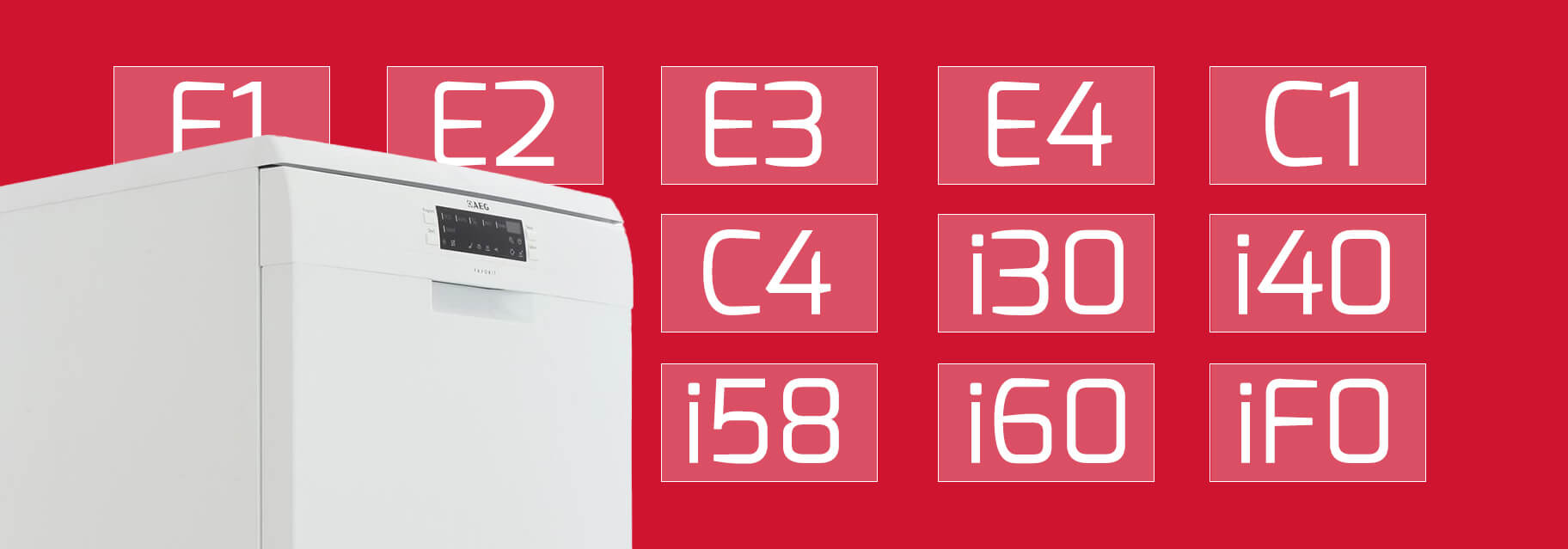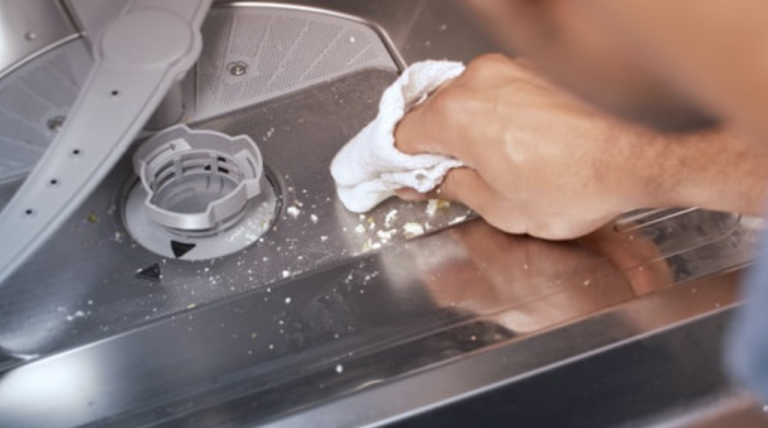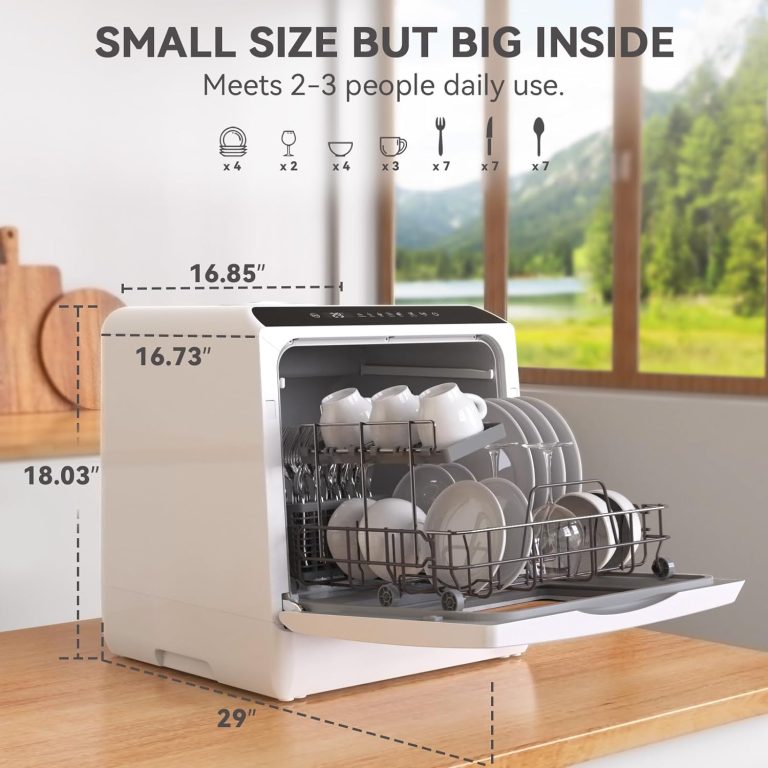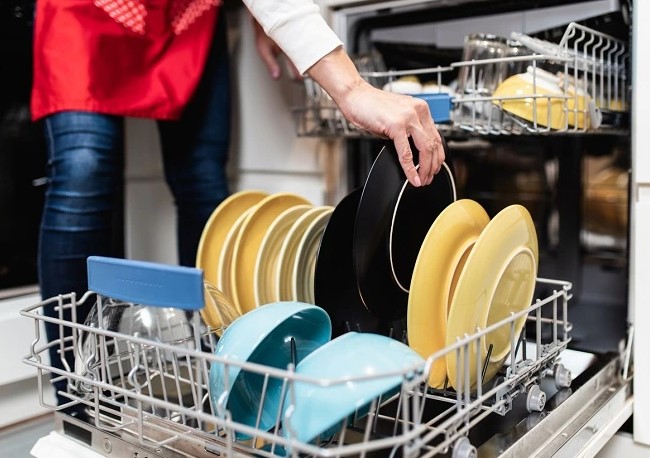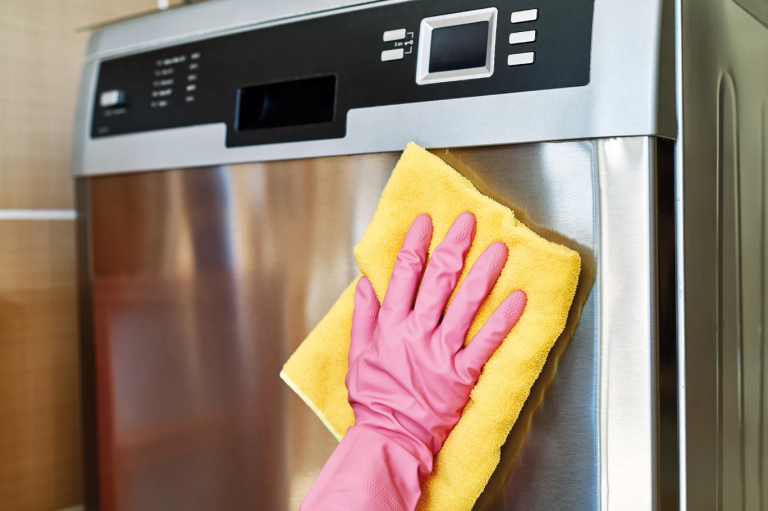KitchenAid Dishwasher Error Codes: What They Mean and How to Fix Them
KitchenAid dishwasher error codes serve as diagnostic tools that indicate specific problems within the appliance. These codes, typically displayed as “F” followed by a number, pinpoint issues ranging from minor glitches to major malfunctions. Understanding these codes empowers homeowners to troubleshoot problems efficiently, potentially saving time and money on unnecessary service calls. This article delves into the most common KitchenAid dishwasher error codes, their meanings, and step-by-step solutions to resolve them.
In the following sections, we’ll explore the significance of error code interpretation, common causes of dishwasher malfunctions, and how to effectively use this guide. We’ll then dive into specific error codes, provide diagnostic steps, offer DIY fixes, and discuss when professional intervention is necessary. Additionally, we’ll cover preventive measures, advanced troubleshooting techniques, and answer frequently asked questions to ensure your KitchenAid dishwasher operates at peak performance.
Importance of Understanding Error Codes
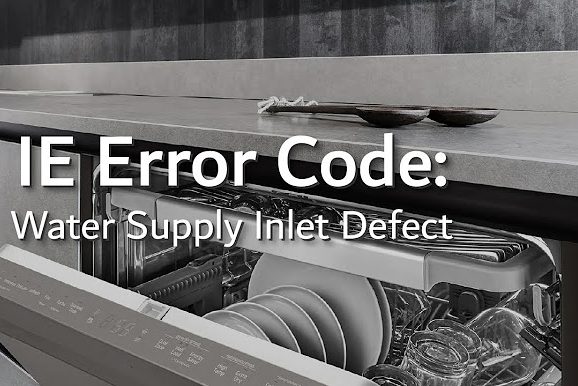
Error codes in KitchenAid dishwashers function as a communication system between the appliance and its user. These codes provide valuable insights into the dishwasher’s operational status and any underlying issues. By deciphering these codes, users can:
- Quickly identify problems
- Implement targeted solutions
- Avoid costly repairs
- Extend the lifespan of their appliance
Understanding error codes transforms troubleshooting from a guessing game into a precise diagnostic process, enabling users to address issues promptly and effectively.
Common Reasons for Dishwasher Errors
KitchenAid dishwashers, like any complex appliance, can experience various issues due to multiple factors. Some of the most frequent causes of errors include:
- Electrical problems (faulty wiring, power surges)
- Water supply issues (low pressure, clogged filters)
- Mechanical failures (worn pump, damaged motor)
- Sensor malfunctions
- User errors (improper loading, incorrect detergent usage)
Identifying these root causes is crucial for implementing effective solutions and preventing recurrent problems.
How to Use This Guide
This comprehensive guide is designed to empower KitchenAid dishwasher owners with the knowledge to diagnose and resolve common issues. To maximize its utility:
- Locate your specific error code in the “Common KitchenAid Dishwasher Error Codes” section
- Follow the diagnostic steps outlined for your error code
- Attempt the suggested DIY fixes if you feel comfortable doing so
- Consult the “When to Call a Professional” section if the problem persists
- Implement preventive measures to avoid future issues
By following this structured approach, you can efficiently troubleshoot and maintain your KitchenAid dishwasher, ensuring its longevity and optimal performance.
Common KitchenAid Dishwasher Error Codes
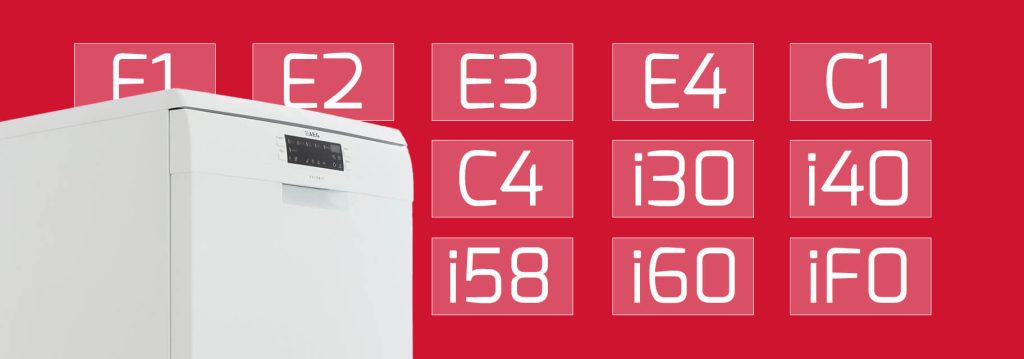
Error Code F1
The F1 error code in KitchenAid dishwashers indicates a temperature sensor failure. This sensor plays a crucial role in monitoring and regulating water temperature during various wash cycles. When the F1 code appears, it typically suggests:
- The temperature sensor has malfunctioned
- There’s a wiring issue connecting the sensor to the control board
- The control board itself may be faulty
To address this error:
- Unplug the dishwasher and wait for 5 minutes
- Reconnect and run a test cycle
- If the error persists, inspect the wiring connections to the temperature sensor
- Consider replacing the temperature sensor if no wiring issues are found
Error Code F2
F2 errors signify problems with the dishwasher’s user interface control panel. This code often appears when:
- Buttons on the control panel are stuck or malfunctioning
- There’s moisture or debris interfering with the control panel’s operation
- The control panel’s circuit board has failed
To resolve F2 errors:
- Clean the control panel thoroughly with a soft, dry cloth
- Inspect for any visible damage or stuck buttons
- Perform a hard reset by disconnecting power for 10 minutes
- If issues persist, the control panel may need replacement
Error Code F6
The F6 error relates to water temperature issues, specifically when the dishwasher fails to heat water to the required temperature. Common causes include:
- Faulty heating element
- Malfunctioning temperature sensor
- Problems with the high-limit thermostat
Troubleshooting steps for F6 errors:
- Check the heating element for continuity using a multimeter
- Inspect the temperature sensor and its connections
- Test the high-limit thermostat for proper functioning
- Consider replacing faulty components as necessary
Error Code Quick Reference
| Error Code | Meaning | Primary Cause |
| F1 | Temperature Sensor Failure | Faulty sensor or wiring |
| F2 | User Interface Control Issue | Stuck buttons or circuit board failure |
| F6 | Water Heating Problem | Defective heating element or thermostat |
Error Code F8
F8 errors in KitchenAid dishwashers indicate water flow problems. This code typically appears when:
- The dishwasher isn’t receiving enough water
- There’s a blockage in the water inlet valve
- The float switch is malfunctioning
To address F8 errors:
- Check the water supply line for kinks or blockages
- Clean or replace the water inlet valve if necessary
- Inspect and clean the float switch mechanism
- Verify proper water pressure to the dishwasher
Error Code F9
The F9 error code signifies a drain issue in KitchenAid dishwashers. This problem occurs when:
- The drain hose is clogged or kinked
- The drain pump is malfunctioning
- There’s a blockage in the dishwasher’s drain system
Resolving F9 errors involves:
- Inspecting and clearing any obstructions in the drain hose
- Checking the drain pump for proper operation
- Cleaning the dishwasher’s internal drain system
- Ensuring the air gap (if present) is clear of debris
Diagnosing and Fixing Error Codes

Steps to Diagnose Errors
Effective diagnosis of KitchenAid dishwasher errors involves a systematic approach:
- Identify the specific error code displayed
- Consult the user manual or this guide for code interpretation
- Perform a visual inspection of related components
- Use diagnostic tools (e.g., multimeter) when necessary
- Test individual components to isolate the issue
- Document findings for future reference or professional assistance
DIY Fixes for Common Issues
Many KitchenAid dishwasher problems can be resolved without professional help. Here are some DIY fixes for common issues:
- Cleaning clogged spray arms
- Replacing worn door seals
- Unclogging drain hoses
- Resetting the control board
- Cleaning or replacing filters
Always prioritize safety by disconnecting power before attempting any repairs.
When to Call a Professional
While many issues can be resolved through DIY methods, some situations require professional intervention:
- Persistent error codes after DIY troubleshooting
- Electrical problems beyond simple resets
- Major component failures (e.g., motor, pump)
- Water leaks from hidden or inaccessible areas
- Issues covered under warranty
Professional technicians possess the expertise and tools to handle complex repairs safely and effectively.
Preventing Future Errors
Regular Maintenance Tips
Implementing a regular maintenance routine can significantly reduce the occurrence of errors in your KitchenAid dishwasher. Key maintenance tasks include:
- Monthly cleaning of filters and spray arms
- Quarterly inspection of door seals and hinges
- Semi-annual deep cleaning of the interior
- Annual inspection of water and drain connections
By adhering to these maintenance practices, you can prevent many common issues and extend the life of your appliance.
Proper Loading Techniques
Correct loading of your dishwasher not only improves cleaning performance but also prevents errors caused by improper usage. Follow these guidelines:
- Scrape large food particles before loading
- Avoid overcrowding dishes
- Ensure spray arms can rotate freely
- Place utensils in the designated basket with handles down
Proper loading techniques optimize water flow and detergent distribution, reducing the risk of clogs and error codes.
Using the Right Detergents and Additives
Selecting appropriate cleaning products is crucial for your dishwasher’s performance and longevity. Consider the following:
- Use high-quality detergents designed for automatic dishwashers
- Add rinse aid to improve drying and prevent water spots
- Avoid using regular dish soap, which can cause excessive suds
- Consider water hardness when choosing detergents
Using the correct products helps maintain your dishwasher’s internal components and prevents residue buildup that can lead to errors.
Recommended Maintenance Schedule
| Frequency | Maintenance Task |
| Monthly | Clean filters and spray arms |
| Quarterly | Inspect door seals and hinges |
| Semi-annually | Deep clean interior |
| Annually | Check water and drain connections |
Advanced Troubleshooting Tips
Resetting Your KitchenAid Dishwasher
Performing a reset can often resolve minor glitches and error codes. To reset your KitchenAid dishwasher:
- Press the “Start/Resume” button and hold for 5 seconds
- Close the door firmly if it’s a hidden control model
- Wait for the dishwasher to drain (about 2 minutes)
- Open the door and press the “Power” button
If this doesn’t resolve the issue, try a hard reset by unplugging the dishwasher for 5-10 minutes before reconnecting.
Checking for Faulty Components
When persistent errors occur, examining individual components can pinpoint the problem:
- Use a multimeter to test continuity in heating elements and sensors
- Inspect wiring harnesses for signs of wear or damage
- Check capacitors and relays on the control board for swelling or leakage
- Test motors and pumps for proper resistance values
Document your findings to share with a professional if needed.
Updating Firmware and Software
Some KitchenAid dishwasher models feature updateable firmware. To check for updates:
- Locate your model’s serial number
- Visit the KitchenAid website or contact customer support
- Follow provided instructions for updating if available
Keeping your dishwasher’s software current can resolve known issues and improve performance.
Conclusion
Summary of Key Points
Understanding and addressing KitchenAid dishwasher error codes is essential for maintaining your appliance’s efficiency and longevity. Key takeaways include:
- Error codes provide specific diagnostic information
- Many issues can be resolved through DIY troubleshooting
- Regular maintenance prevents common problems
- Professional help is necessary for complex repairs
By familiarizing yourself with these codes and following proper maintenance procedures, you can ensure your dishwasher operates smoothly for years to come.
Encouragement for Regular Maintenance
Consistent maintenance is the cornerstone of dishwasher longevity. By incorporating simple tasks into your routine, such as cleaning filters and inspecting seals, you can prevent many common issues before they escalate into costly repairs. Remember, a well-maintained dishwasher not only performs better but also consumes less energy and water, benefiting both your wallet and the environment.
Final Thoughts on Keeping Your Dishwasher Running Smoothly
The best KitchenAid dishwasher is one that operates reliably day after day. By understanding error codes, performing regular maintenance, and addressing issues promptly, you can ensure your dishwasher remains a dependable part of your kitchen. When in doubt, don’t hesitate to consult your user manual or seek professional assistance. With proper care and attention, your KitchenAid dishwasher will continue to provide spotless dishes and worry-free operation for years to come.

Michael Thompson is a highly skilled appliance technician specializing in KitchenAid dishwashers. With many years of experience, Michael is renowned for his expertise in handling various models of KitchenAid dishwashers, ensuring optimal performance and longevity. His dedication to customer satisfaction and in-depth knowledge of appliance technology make him a trusted figure in his community. Michael’s commitment to quality service has earned him a reputation as one of the best in his field.

